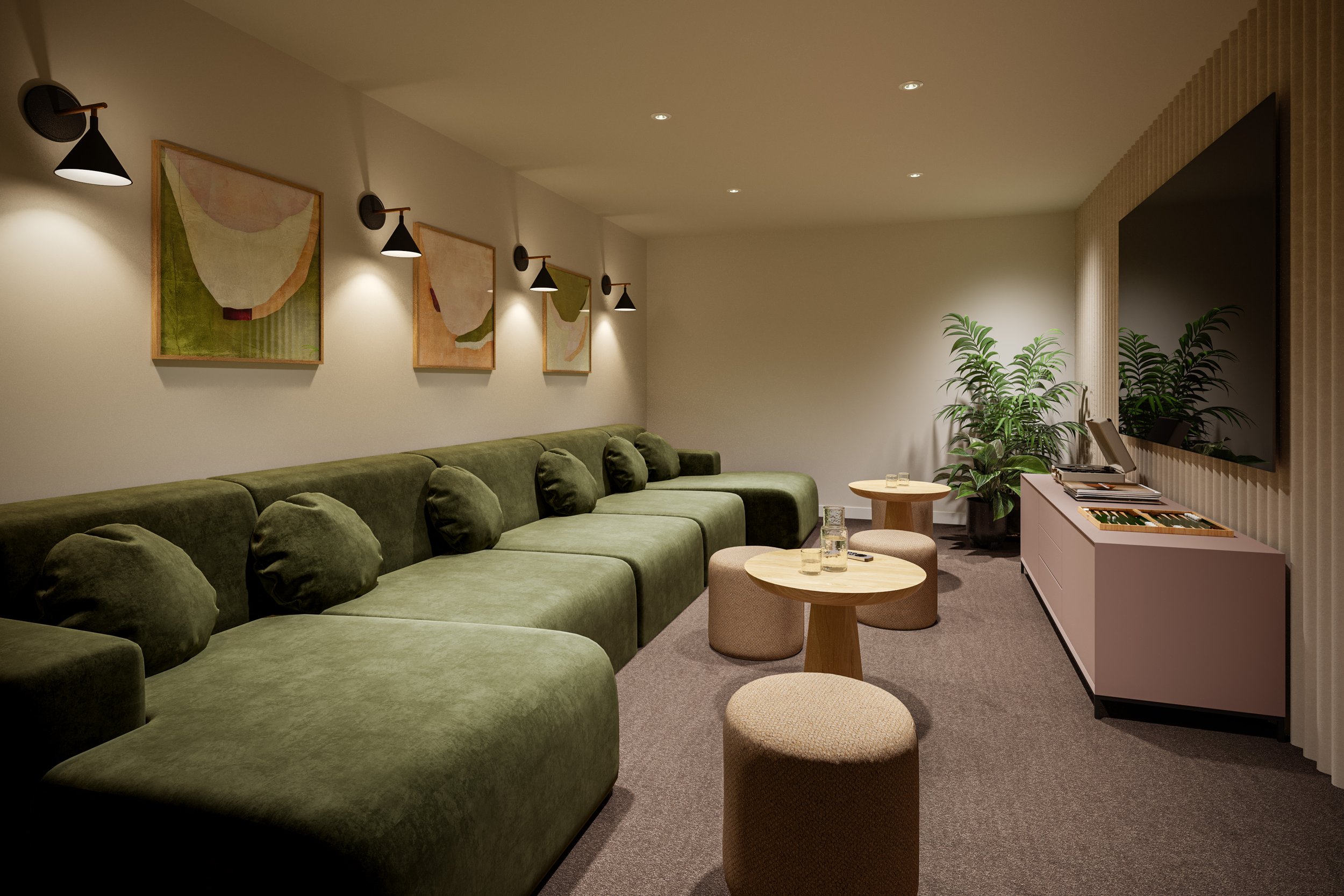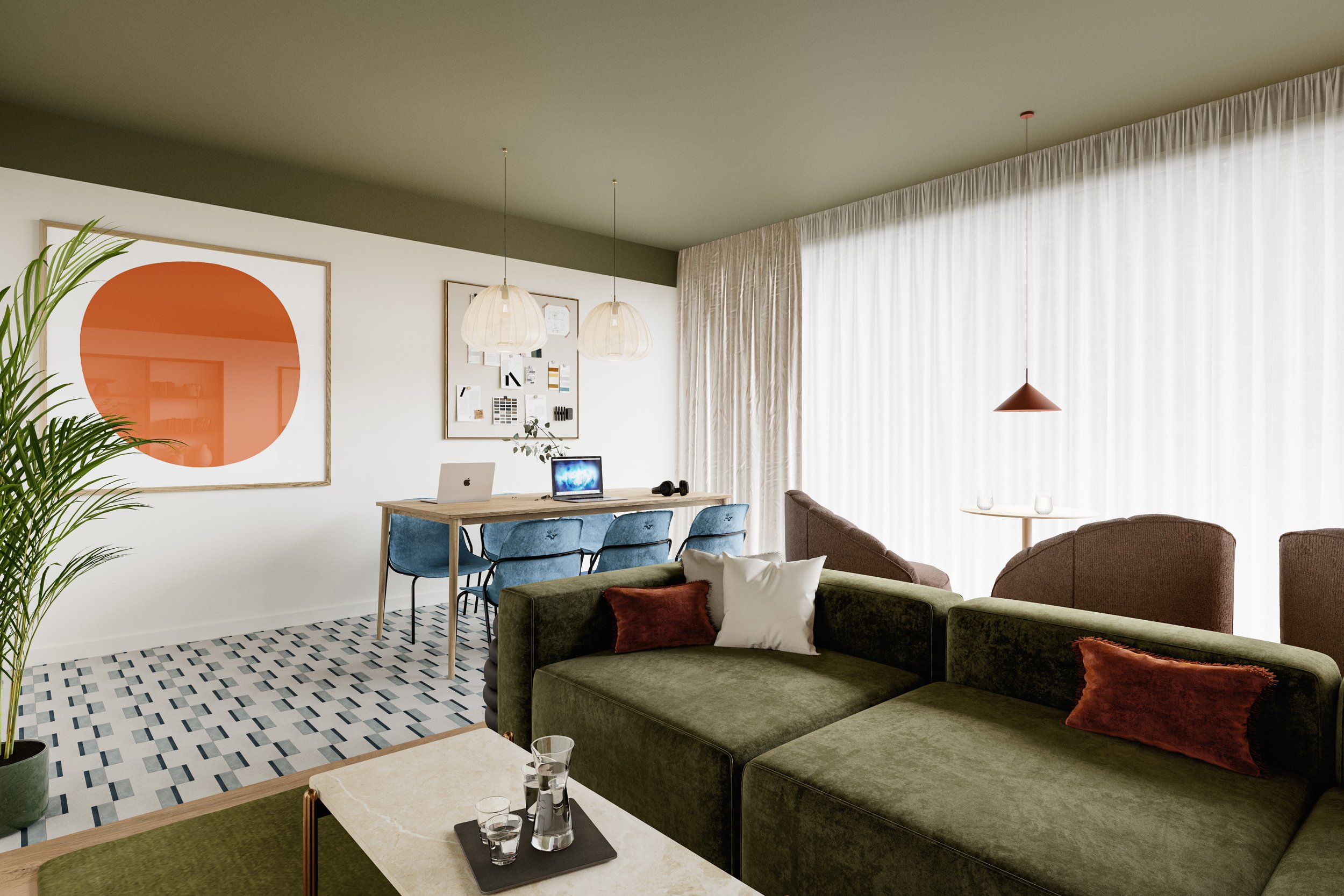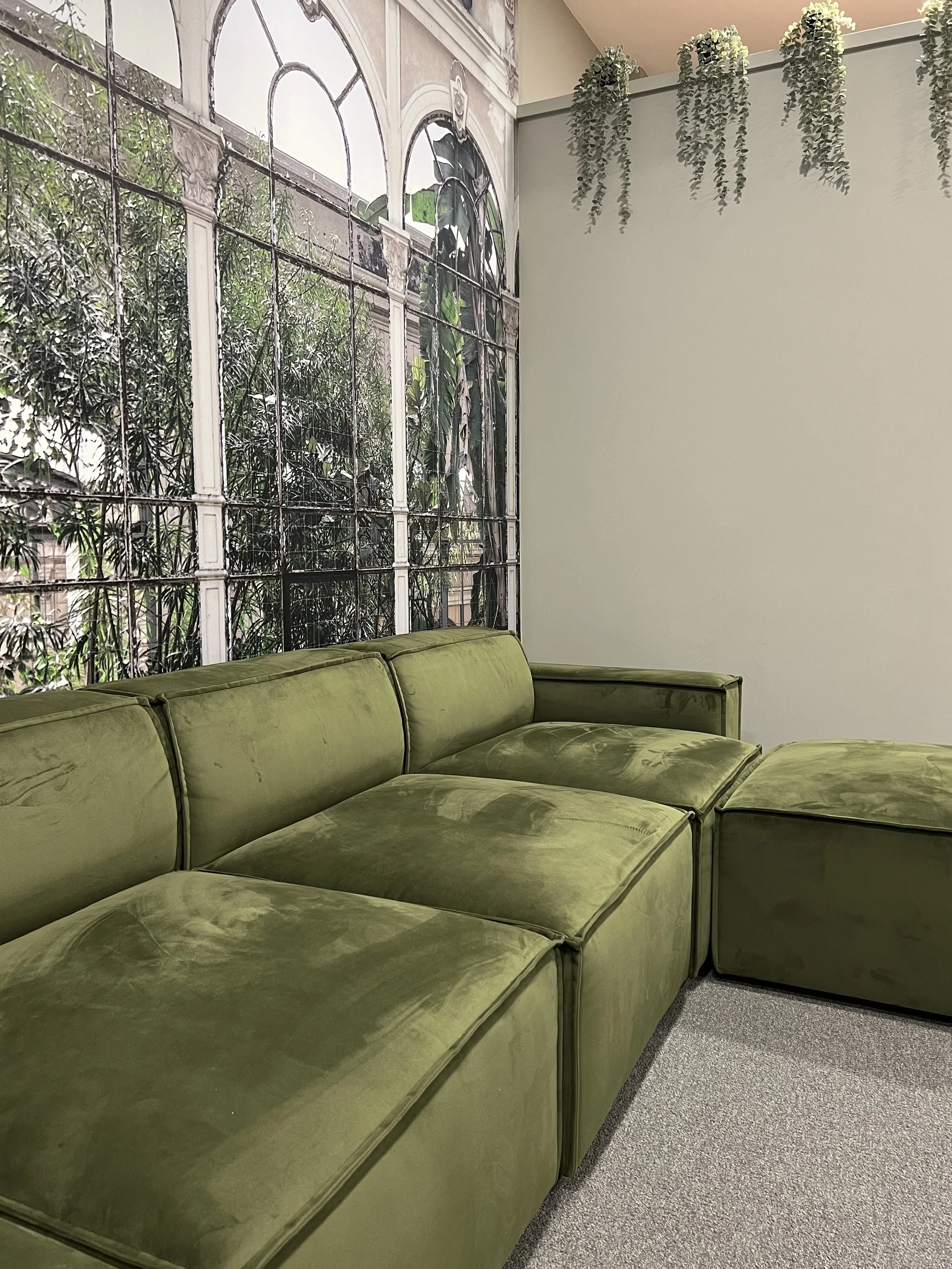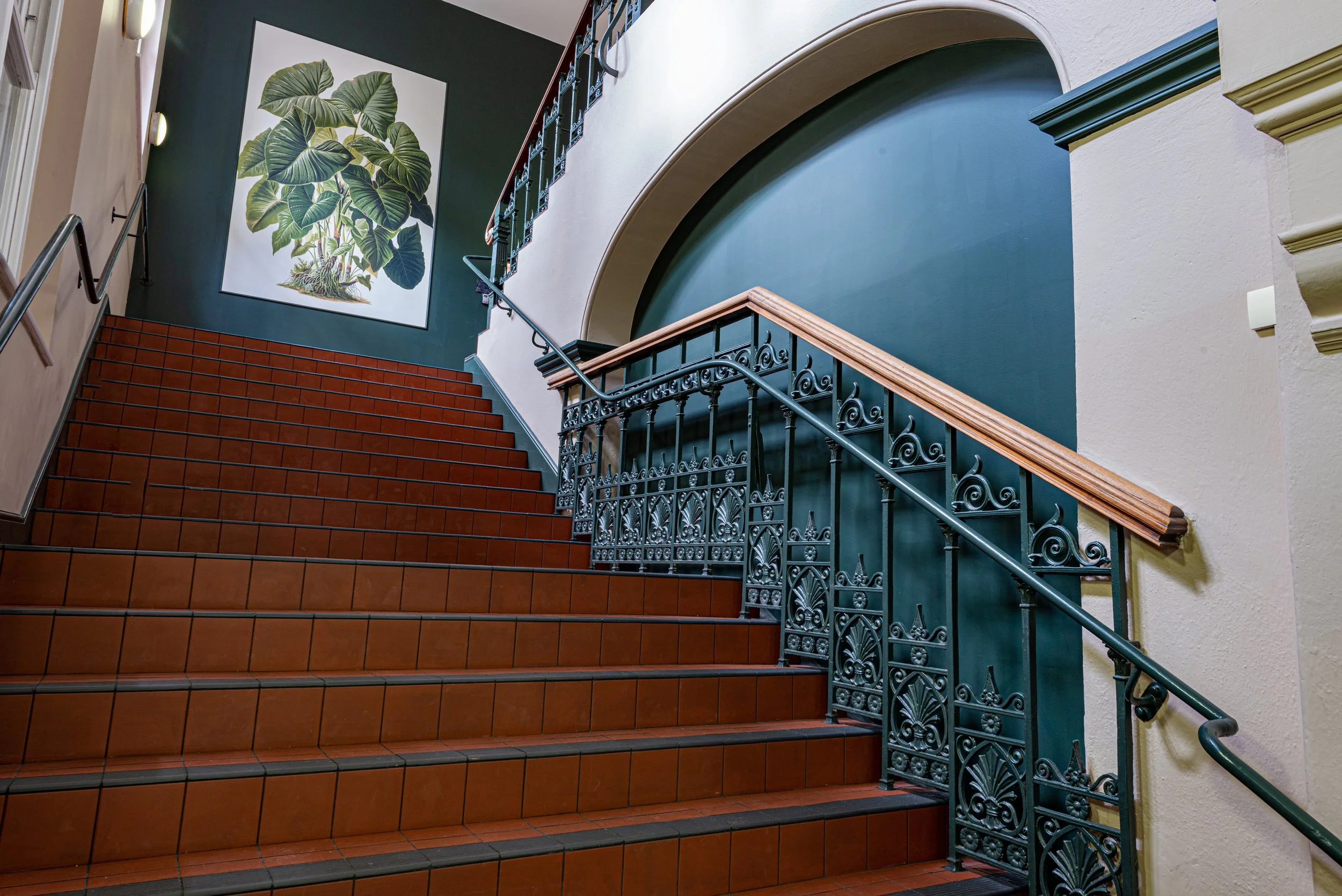The Importance of Storytelling in Designing Homes for Gen Z and Gen Alpha Students
I’ve got a secret to tell you. Most companies come across as perfectly polished because that’s what they think people want to see. But in reality, behind the scenes, there’s always a degree of chaos - and we are no different.
We’re five years into Nelson and Long, still discovering our USP’s, and I think we may have just found another to explore. Drum roll please… storytelling through design.
Our USP’s have subtly shifted and adapted over time, but this angle feels aligned not only with who we are, but with the future of interior architecture in the PBSA sector.
At our core, we’re creatively colourful, endlessly curious, and explorers of all things design. Outside the studio, we’re writers and wanderers, so storytelling through design feels like a natural extension of our personalities - and of the ever-evolving sector we love creating for. These things feed beautifully into the narrative of a space, making it more uniquely layered, emotionally connective, and user-friendly.
Through storytelling, we can create homes that truly connect with Gen Z and Gen Alpha students. It’s about engaging with them, walking in their footsteps, seeing the world through their eyes, and understanding their journeys - then translating that insight into spaces that feel personal, inspiring, and full of life. We’ve been doing this all along, but now it’s time to claim it and own it.
So, let’s dig further into why storytelling is so important when designing:
Immersive Experiences that Draw Them In
Gen Z and Gen Alpha crave experiences, not just spaces. The way to build a successful immersive environment is to consider every detail. Simple, right? Well, not always - because too often spaces look soulless and lack the experiential quality that students want.
When I say experience, it doesn’t always have to be bold or obvious. Sure, it’s great to include gaming zones and immersive features, but it’s just as important to focus on the fundamentals of design. Once you get strong, favourable foundations down, you’re off to a good start. This layered approach shapes the student’s wellbeing experience - and that’s integral to a successful scheme.
What are students seeing through their screens? It helps to mimic some of those settings to align with their preferences and aspirations, but it’s just as important to balance them with spaces that minimise doomscrolling, encourage connection, and spark community building.
Key considerations: lighting, tactile finishes, and a holistic, considerate colour palette. Also think about the senses - how can interior design elements ignite, excite, or soothe?
These details feed directly into the overall story of the design, helping students relax, unwind, and feel mentally and physically nourished.
Spaces They Can Truly Connect With
Now more than ever, students want spaces that feel like home - places that are personally aligned with their needs and designed with multifunctionality in mind. Yes, these topics are often discussed, but what can be groundbreaking is the way they are approached.
It’s not about catering to the masses, but to individual needs: what do students want, crave, and desire? Cohorts change, but that’s why variety is key. Spaces must flex to different personality types, moods, cycles, and activities. That’s the key to unlocking student happiness and retention.
I’m not planning on moving house anytime soon - because I’ve curated a space that reflects who I am. And we can help students feel the same about their accommodation.
Things to consider: layouts that adapt, moveable furniture so students can reconfigure and refresh their spaces. By day, a TV lounge; by night, an atmospheric music and chill zone - voila. Give students power and control, so they feel like young adults, not adolescents. That’s how they truly connect to a space.
Also, don’t overlook the small details. They’re often the first to be value-engineered out of a scheme, but they’re the magic components that break barriers and encourage conversation. Incorporate thoughtful artwork and accessories that connect people from different regions, dialects, and countries. Storytelling through design allows students to find meaning in their surroundings. It’s about design that transcends the physical and connects emotionally. That’s beautiful design.
Designing Spaces Around Their Wellbeing Journey
If there’s one thing I’ll continue to shout from the rooftops, it’s this: “Wellbeing design is integral to creating happy and healthy living environments for students!”
Mental health issues are on the rise, and sadly, it’s no surprise. But the positive shift is that many students are open about what they need - and we just have to listen. Thankfully, we live in an age where more of us are listening.
Wellbeing can be applied in small but powerful ways. Lighting, reducing visual stress, clutter-free environments - these details matter.
But when you go further, the real experimentation begins. It’s not as simple as painting a wall green and adding plants. It requires a deep understanding of what students’ need from a space. Design for self-care, reflection, and support through layout, furniture choice, and programming. Think nature-inspired quiet nooks for focus, scented social hubs for connection, and access to greenery. These elements signal a commitment to wellbeing and feed back into the storytelling narrative - creating immersive experiences that students crave.
Creativity on a Budget Enhances the Student Experience
This is one of N+L’s favourite areas to explore. Coming from humble roots, we know how to make a budget stretch while staying aligned with a design vision that fits the future student.
Good design and budget aren’t mutually exclusive. In fact, lower budgets can produce more interesting, layered, and authentic outcomes - which is exactly what students want.
Authenticity wins with this generation. Subtle cues like recycled fabrics add depth and align with their values. Upcycled furniture, DIY-inspired features, creative material use - storytelling allows you to enrich spaces even within budget constraints.
Being creative with budgets gives students a richer, more supportive experience. Small details = big impact. Students value thoughtful design choices that enhance their daily lives.
It’s time to fly the sustainable, budget-conscious flag high. More students than you think will engage with your values and culture - and the sector needs this push against unaffordable rents and glossy, over-engineered schemes.
Looking at design through this unique storytelling lens is an intriguing and exciting path for us to explore. As the seasons change - physically and metaphorically - it feels like the right time to lean into it for the students and residents we design for.
Storytelling through design feels like a warm hug (something most of us would love right now). It feels like home - and that’s exactly what students need to be nourished and nurtured.
By mirroring elements of their world, focusing on wellbeing journeys, and listening to their individual needs, we can build spaces that people emotionally connect with. Spaces that are purpose-driven and meaningful.
At Nelson and Long, we believe this isn’t just the future of PBSA design- it’s the present, and it’s time to embrace it fully.
N+LX




